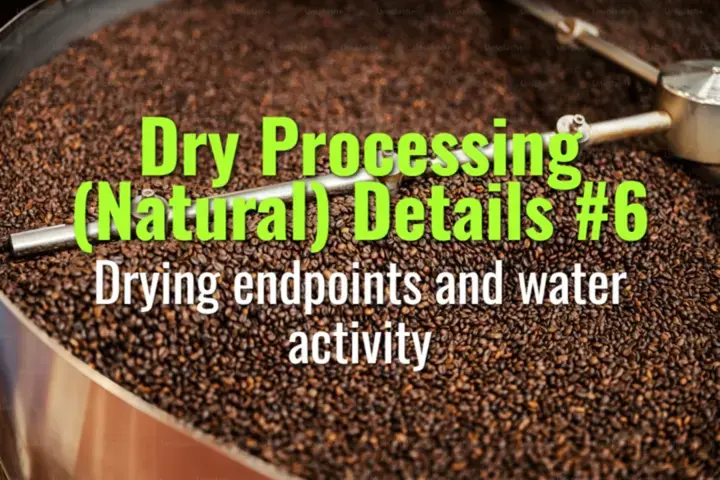Drying endpoints and water activity
This topic explains how farmers determine the correct drying endpoints in natural coffee processing, the role of water activity, and why precision at this stage ensures stability, quality, and shelf life.
- Coffee Basics Nerds
- 2 min read
Article 6 of 12 in Dry Processing (Natural) Details/

Drying Endpoints
- Target moisture content: 10–12% in dried cherries or parchment.
- Below 10% → beans become brittle, risk breakage in hulling.
- Above 12% → beans susceptible to mold, spoilage, and storage defects.
Measuring Endpoints
- Traditional methods:
- Bite test (bean should be hard, brittle sound).
- Weight monitoring during drying.
- Modern methods:
- Digital moisture meters for accuracy.
- Multiple samples taken across drying beds for consistency.
Water Activity (aw)
- Definition: Measure of free water available for microbial growth, not just total moisture.
- Target range: aw 0.55–0.65 for stable green coffee.
- Even with correct moisture %, high water activity can cause mold and fermentation.
Why Water Activity Matters
- Microbial stability: Below aw 0.60, most molds and bacteria cannot grow.
- Shelf life: Stable water activity ensures green coffee retains flavor longer.
- Roasting consistency: Predictable behavior in roasting when beans are evenly dried.
Risks of Poor Endpoint Control
- Over-dried: Loss of aromatic precursors, flat flavor, bean brittleness.
- Under-dried: Moldy, musty flavors; risk of rejection by buyers.
- Uneven drying: Leads to inconsistent cup quality and storage instability.
Best Practices
- Use calibrated moisture meters and water activity meters when available.
- Confirm uniform drying across all beds and batches.
- Store dried coffee in clean, ventilated warehouses at stable humidity.
Lasting Importance
Controlling drying endpoints and water activity is critical to preserving coffee quality after processing. By hitting precise targets, farmers ensure their naturals remain safe, stable, and flavorful through storage, transport, and roasting.
You might also like:
- Tags:
- Lasting Importance
- Green Coffee
- Best Practices
- Cup Quality
- Shelf Life
- Coffee Quality
- Moisture Content
- Water Activity
- Uneven Drying
- Risks Poor
- Microbial Growth
- Moisture Meters
- Mold Fermentation
- Target Moisture
- Drying Beds
- Dried Cherries
- Drying Leads
- Preserving Coffee
- Flat Flavor
- Leads Inconsistent
- Uniform Drying
- Traditional Methods